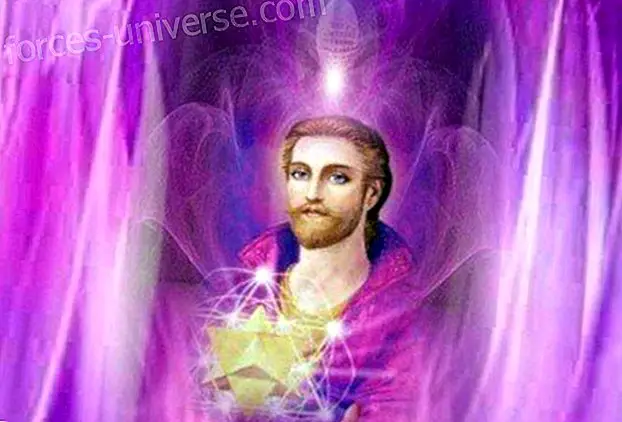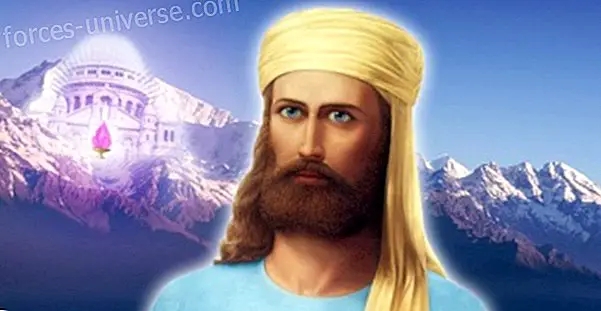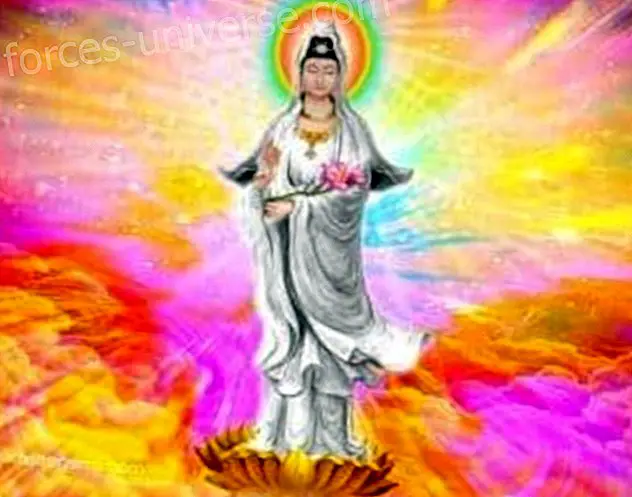
“ The more advances, the more bonds you will find at your feet. The path that leads to the goal is illuminated by a single light: the light of the throw that burns in the heart. The more you dare, the more you will get. The more he fears, the more that light will pale, the only one that can guide him ”
- Madame Blavatsky-
1. Theosophy versus Religion, Philosophy and Science.
The human being, since the beginning of time has faced a series of transcendental issues, inherent in his own existence: Who am I? Where am I going? What is the origin of Life ? What will happen to me when I die? Does what I do make any sense ? Is there destiny, and in that case, I have the power to change it?
To those and other essential questions, he has tried to answer using different branches of knowledge .
Namely: religion, philosophy or science.
The R election arises from the difficulty of finding answers based solely on pure reason .
Its essence constitutes faith . The belief that the Universe, Man and Life come from an unknowable divine origin. Religion accepts the authority of a religious leader or leaders who claim to possess irrefutable knowledge thanks to external Revelations, whether received directly or contained in Sacred Books.
Philosophy stems from the disagreement of some thinkers who did not have enough faith. The philosophers felt the need to think, deduce, contrast and formulate their own theories to answer the essential questions.
Philosophy uses Reason and tries to reach the first causes of knowledge. The ancient philosopher considered himself above all, a seeker of Truth .
The Science has sought reliable and systematic responses through observation, experimentation and reasoning. Using logic and mathematics, he develops formal models to explain the world. Their results must be verifiable by others, so that scientists can work on the results of those who preceded them.
In fact, Positivist Scientism came to consider Science as the new and definitive religion, belittling any unverifiable phenomenon. And it is that the cognitive omnipotence of Science that some intellectuals preached led them to arrogant denial of any other modality of human knowledge.
And it is in this framework where Modern Theosophy begins to gain strength, because there were always men and women who considered Reality as a Whole. A complete and integrated set that cannot, nor should be divided, because religion, Philosophy and Science individually considered, only reveal incomplete parts of the Truth .
2. Brief History of Theosophy
The Theosophy itself is a very old movement, whose fundamental concepts have been transmitted throughout history behind the veil of many names. Egyptians, Indians, Greeks, Romans and medieval Europeans also participated in similar ideas, while personalities as eminent as Pitagoras, Plato, Leonardo da Vinci, Paracelsus or Isaac Newton were messengers of this universal knowledge.
The word comes from the Greek: Theos (gods) and Sophia (wisdom). Therefore, Theosophy literally means Sabidur a Divina and is the knowledge of the first causes and the Laws of Nature that give man a superior sense of Life, thus as an ability to understand its apparent contradictions. That knowledge does not come from external Revelations but from the Interior.
The neoplatenic philosophers of the Alexandrian School were the first to use the term Teosof a, but we should thank Helena Petrona Blavatsky and Colonel Henry Steel Olcott the theosophical splendor of our days.

At the end of the 19th century they recovered the theosophical teachings for the western world and founded " The Theosophical Society" or " Theosophical Society " in New York City.
His motto is: "There is no religion higher than the truth"
The work of the Eosophical Society has had a great influence on the rediscovery of Eastern scriptures such as the Bhagavad Gita, the Vedas, the teachings of Yoga and Buddhism .
In addition, the founders made it clear that they were not giving any new philosophy or religion, but that it was the fruit of knowledge accumulated over ages; the so-called " Wisdom without Age ".
The cult work " The Secret Doctrine " written by Blavatsky, constitutes one of the fundamental foundations of modern Theosophy .
3. But then ... What is Theosophy?
Theosophy designates the basic knowledge of all religions and philosophical systems since ancient times. It is said that Theosophy emerged in all ages as an eclectic system of thought that seeks to analyze and spiritually expose the nature of the macrocosm (God) and the microcosm (man), as well as its close relationships. According to the theosophists, this doctrine is as old as humanity and has been renewing over the centuries, collected by schools, groups, secret societies, Teachers ...
It represents a modern vision of Sanatana Dharma, the " Eternal Truth ", as the correct religion of man.
In short, it groups together the set of theories that seek to lead men to Wisdom, seeking God in the inner life, and the Eternal Truth in the common teaching of all religions.
Theosophy is presented as an intellectual, physical and mental action that aims to reconcile religious dogmas, philosophical theories and discoveries of Science, in order to unify the beliefs of humanity and establish a universal fraternity.
4. Principles of Theosophy.
- All existence is a Unit . All seemingly separate Units are parts of a unique All .
- All existence is governed by Invariable Laws . These Laws apply to both the visible and the invisible part of Nature, the Universe and Man .
- Evolution is a fact in Nature . Through the interrelation between Spirit and Matter, between Life and Form, the infinite possibilities of being gradually emerge from their state of dormancy to that of active expression.
- Man is a phase in the Evolution process. The human phase differs from the previous ones mainly in the fact of Self-Consciousness, which gives man only responsibility for his actions and the power to direct the course of his future evolution.
- Every human life, from birth to death, is part of a total scheme of Individual Evolution . This scheme is determined by certain laws that operate constantly. The most relevant to understand the conditions of daily life are:
- The Law of Rhythm, which causes life and death to follow each other as the awakening continues to sleep in the daily cycle
- The Law of Action or Karma, which relates each event to those that preceded it and to those that follow it, since the causes are related to its effects.
- The individual, as part of the Unique Existence and endowed with Self-Consciousness, has the power to free himself from all the limitations of a merely human existence and to know from his own experience the fact of his identity with God.
- The path of knowledge of our own Divinity is in itself a consequence of the fulfillment of the Natural Law . This path can be found and followed by those who are willing to study the Laws of Nature and adapt their lives to those conditions that make the discovery of Truth possible .
5. Theosophy today.
Currently the influence of Theosophy is broader than we think, although it is popularly unknown.
Theosophy and the dissemination of Eastern teachings in the West caused the New Age movement which in turn popularized concepts such as Karma, Reincarnation and Meditation . Although their beliefs were not unified, the influence of theosophical principles is more than evident.
On the other hand, many researchers exceeded the limits allowed by the scientific method and moved to philosophical thinking, looking for answers that go beyond the scientifically verifiable .
As an example, Albert Einstein transcended the Laws of Physics, glimpsing the Universe in a manner similar to the conceptions contained in Ancient Wisdom . David Bohm and Karl H. Pribram developed the holonomic model of brain functioning, assimilating the functioning of the human brain to a hologram . That holographic paradigm was based on a fundamental idea of the philosophies of India, of the Pythagoreans and of Neoplatonism: the Universe is One and in each part is the All in power.
The influence of Theosophy is still visible in many of the movements encompassed by our time. The clearest example is Conny Mendez's Metaf sica Cristiana or the current diffusion of the Secret and the Law of Attraction .
In conclusion, we can affirm that Theosophy has consciously or unconsciously influenced thinkers, philosophers and scientists of all ages and cultures. It is everywhere and we have all known it in one way or another, although surely we have not noticed.
MORE INFORMATION in the manuals: La Teosof a by Jacques Lantier, La Teosof a in the 21st century by Carlos P rez and The Secret Doctrine of Helena P. Blavatsky






